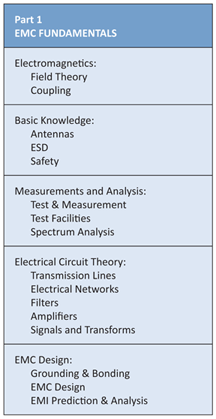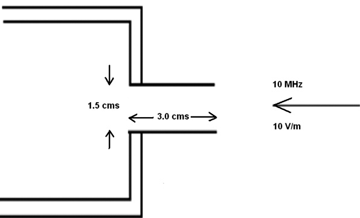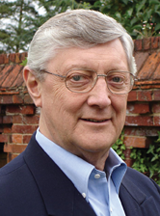It is now time to introduce the officers and staff of RABQSA International who will be responsible for the running and development of the iNARTE Brand in the future. My wife, Kathy, and I, who have had this responsibility for the last 6 years, will be serving in a training and advisory role during the management transition period. It has been a great pleasure to have been of service to the engineers and technicians who practice in the different iNARTE disciplines, and particularly rewarding when we hear how iNARTE certification has helped secure employment or career advancement for someone.
Your new management team will be:
Peter Holtmann, President and CEO, pholtmann@rabqsa.com
Adam Maxwell, Director of Global Operations, amaxwell@rabqsa.com
Frank Phillips, Manager of Business Development, fphillips@rabqsa.com
Monique Inman, Manager of Operations USA, minman@rabqsa.com
Technology transfer and moving of hardware from our New Bern, NC office to the RABQSA Milwaukee office has begun. This process will take place gradually over the next two months in order that it is not too disruptive to our operations. Nevertheless, we expect that some longer than normal times will be needed in processing certification requests and marking of examination results during this period. By the end of August all systems should be operating smoothly in the new RABQSA offices.
iNARTE EMC DESIGN ENGINEER CERTIFICATION
As reported last month, iNARTE attended the High-speed digital engineering and EMC series of courses at the University of Oxford. Although the university and course presenters showed great enthusiasm for our involvement, we were unable to attract any of the attendees to participate in the examination phase. Talking to some attendees, we found that many of them were most interested in the digital design engineering courses but did not fully understand how this work would need to be integrated with EMC disciplines. It seems that so many companies keep these two departments separated, which often results in designs evolving to an advanced stage before an EMC survey or simulation effort takes place. The design course attendees understood this problem, but attendance fees were being paid by their employers and funds for non essential workshop or tutorial programs were nonexistent this year.
Oxford University wants to continue to keep EMC as part of this annual digital design course and expects that the value of this connection and the added value of a credential for EMC Design in digital engineering will become apparent over the next year or two.
We did get one applicant for certification but he did not realize that EMC had nothing to do with Extra Marital Curricula, or Excommunication from Mother Church, so unfortunately as impressive as his credentials seemed to be, we were not able to assist him.

THE NEW WIRELESS DEVICE CERTIFICATION PROFESSIONAL
This month we will have completed the details for the launch of our new Wireless Device Certification Professional certificate. This new credential is intended to recognize the special expertise required to correctly evaluate the many wireless devices that are being presented for certification in accordance with FCC and other international regulatory requirements.
The purpose of the Wireless Device Certification Professional program is to foster technical “excellence” in the evaluation and certification of wireless devices against a complexity of regulatory requirements. This approach establishes technical competency criteria for Wireless Device Certification and enforces these criteria for technical personnel performing that work. The program benefits the individual professional and the certification community as a whole by establishing a standard of excellence that will endure and extend across regional and commercial boundaries.
iNARTE Wireless Device Certification credentialing is a three step process based on education and work experience, peer endorsement and examination. Educational and work experience may be a combination of two or more years of related post secondary education combined with at least six years of applicable industrial experience, or a minimum of ten years related industrial experience. Peer and supervisory endorsements are used to substantiate the credibility of the candidate. Examinations are confined to the area of EMC fundamental knowledge and Wireless Device certification essentials. The target of the examination is to establish that a candidate has a comprehensive knowledge in essential areas
The examinations consist of two Parts. Part 1 will be given over a four hour period on the morning of the examination day. Part 2 will be given over a four hour period in the afternoon. All questions are multiple-choice and will cover both EMC Fundamentals in Part 1 and Wireless Device Certification essentials in Part 2. A passing grade for this examination is 80% average between the two Parts.


Applicants not passing an examination are not required to submit a new application form to retake it, but must notify iNARTE 45 days in advance of availability for the next examination. A candidate failing an examination may apply for re-examination at the expiration of 90 days and will be re-examined without penalty. A retesting process fee is required. Candidates may retake one or both Parts of the examination as many times as they wish. Each attempt will be matched with earlier attempts in order to determine the best combination of Part 1 and Part 2 scores. However, all applicants who retake only one Part will need to achieve the passing grade combination within 24 months, after which a new set of attempts starting with a full examination will be required. ![]()
QUESTION OF THE MONTH
Last month we asked:
Adding depth to an opening in a shielded enclosure can help in the overall shielding effectiveness. What is the total shielding effectiveness to a 10 MHz field with the strength 10 V/m if the only opening in the structure is 1.5 cm round with a 3cm long tube, or waveguide bonded to it?

A) 120 dB
B) 60 dB
C) 90 dB
D) 30 dB
The answer is A) 120 dB
This month’s question is:
Intermodulation products are a result of which of the following:
A) Motor Brushes that arc when operated in an unshielded area.
B) Mixing of two or more RF signals in a nonlinear junction.
C) Transmitter primary frequencies that mix in linear junctions.
D) Nonlinear junctions rubbing together causing intermodulation.
E) Adding an information signal to a carrier.
 |
Brian Lawrence began his career in electromagnetics at Plessey Research Labs, designing ”Stealth” materials for the British armed services. In 1973 he moved to the USA and established a new manufacturing plant for Plessey to provide these materials to the US Navy. In 1980 he joined the Rayproof organization to develop an Anechoic Chamber product line. As a result of acquisitions Rayproof merged into Lindgren RF Enclosures and later into ETS-Lindgren. Following a career of more than 40 years in the EMC field, Brian retired as Managing Director of ETS-Lindgren UK in 2006. Later that year he assumed the position of Executive Director for the National Association of Radio and Telecommunications Engineers. NARTE. Now renamed iNARTE, the Association has expanded its operations and in 2012 merged with RABQSA International, a subsidiary of the American Society for Quality, ASQ. Brian remains associated with RABQSA through this merger process. |
